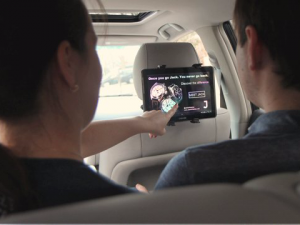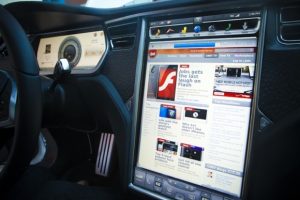In-Car Advertisement: Changing Landscape
The opportunity and the opportunist
Ride hailing services like Uber, Lyft and Didi Chuxing arechanging the commuting landscape. Anaverage American spends around 50 minutes per day commuting. While on a ride, riders are essentiallycaptive in a comfortable environmentuntil their destination, giving immense opportunity for advertisers to put forward their point. Advertising startups and incumbent companies want to use the full potential of this situation. The best practices and learnings of advertisements from the mobile, TV and internet space can be applied in“in-car advertisement”.
 Companies likeViewswaggen(earlier known as Vugo) have come into the landscape providing an advertisement platform for companies, inside Uber and Lyft rides. The advertisements are not like a dumb billboard or a pamphlet i.e. the same for every consumer passing by. It can be customized andtargeted for a specific audience based on their location, destination and even personal preferences.For example, a person going to a mall in holiday season might be interested in sales in the destination’s shops. Uber, realizing the potential, developed a rival for Viewswaggen, a service called Trip Experiences, connecting riders with third party apps and giving them specific content during their Uber rides.
Companies likeViewswaggen(earlier known as Vugo) have come into the landscape providing an advertisement platform for companies, inside Uber and Lyft rides. The advertisements are not like a dumb billboard or a pamphlet i.e. the same for every consumer passing by. It can be customized andtargeted for a specific audience based on their location, destination and even personal preferences.For example, a person going to a mall in holiday season might be interested in sales in the destination’s shops. Uber, realizing the potential, developed a rival for Viewswaggen, a service called Trip Experiences, connecting riders with third party apps and giving them specific content during their Uber rides.
Changing landscape
Uber, Lyft and many other automotive players see thefuture of transportation in autonomous vehiclesand are racing to be first in the space.
With the advent of autonomous driving thedriver along with any co-passenger will be free to engage in other activity. Thevehiclewill eventually becomea place to work, for entertainment and for communication, as the car provides a good level of privacy within the cabin. The environment is likely to be afocused personalized space with greater attention spanof riders as comparedto that on a social networking platform like Facebook or Twitter. Advertisers can reach out to muchmore targeted audiencewith new data being collectedby the vehicle itself like location, content usage data and driving patterns.
Although, standards are not yet defined for “in-car advertisements” in autonomous vehicles,any laws will prioritize the safety of passengers. There is still debate as to whether advertising will be driven by the consumer’s mobile device or directly from in-car infrastructure. A big screen in the center console can be a differentiator in this situation as it will become the hub of entertainment and communication within the car.Advertisements can be made interactive with talk-back keywordsstandardized across the platform to involve the consumer and enhance the overall experience. Automotive players are ready to integratein-car payment methods with instant purchasing option;Visa is already running a test program for the same. The integration of payment gateway within the vehicle will push the limits of what can be done from inside of a car.
passengers. There is still debate as to whether advertising will be driven by the consumer’s mobile device or directly from in-car infrastructure. A big screen in the center console can be a differentiator in this situation as it will become the hub of entertainment and communication within the car.Advertisements can be made interactive with talk-back keywordsstandardized across the platform to involve the consumer and enhance the overall experience. Automotive players are ready to integratein-car payment methods with instant purchasing option;Visa is already running a test program for the same. The integration of payment gateway within the vehicle will push the limits of what can be done from inside of a car.
的必然性
Some debate that autonomous cars will take the roads in the next five years, others that it will take considerably longer due to regulatory issues. But theinevitable understanding is that autonomous vehicles are the future for personal transportation. Along with the way we travel, the landscape of the way we spend our time while travelling will also change. The same disruption was seen in television, music and mobile devices . Now it is time for the automotive space to see the change.


